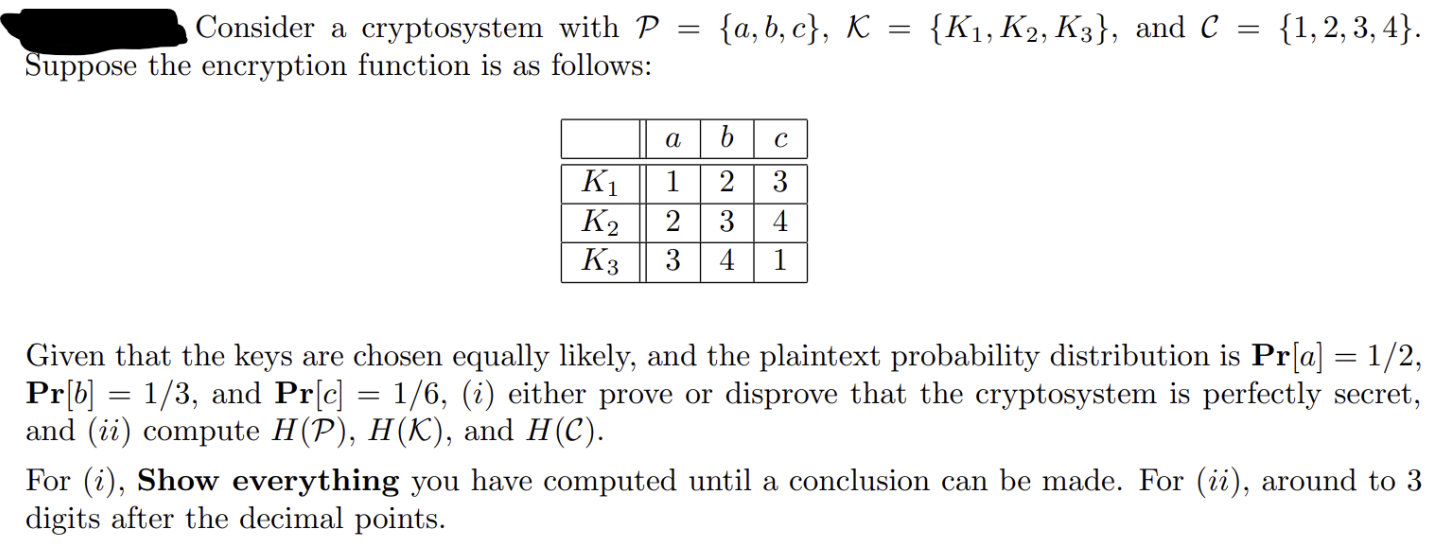Answered step by step
Verified Expert Solution
Question
1 Approved Answer
answer and explain this problem Consider a cryptosystem with P={a,b,c},K={K1,K2,K3}, and C={1,2,3,4}. Suppose the encryption function is as follows: Given that the keys are chosen
 answer and explain this problem
answer and explain this problem
Step by Step Solution
There are 3 Steps involved in it
Step: 1

Get Instant Access to Expert-Tailored Solutions
See step-by-step solutions with expert insights and AI powered tools for academic success
Step: 2

Step: 3

Ace Your Homework with AI
Get the answers you need in no time with our AI-driven, step-by-step assistance
Get Started


